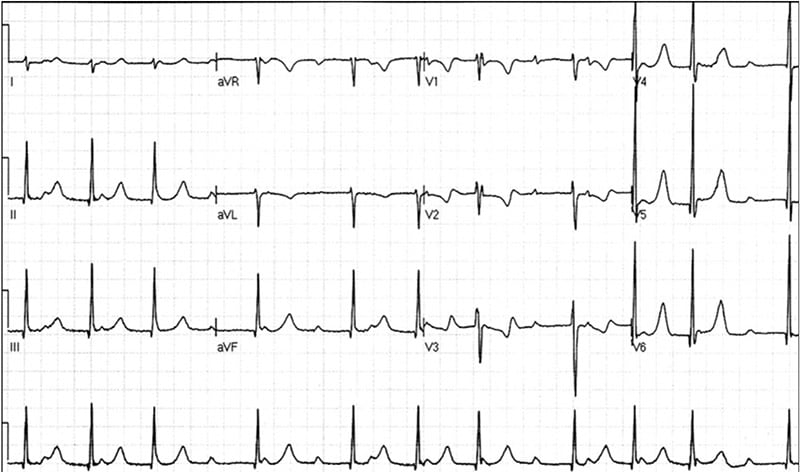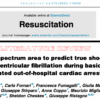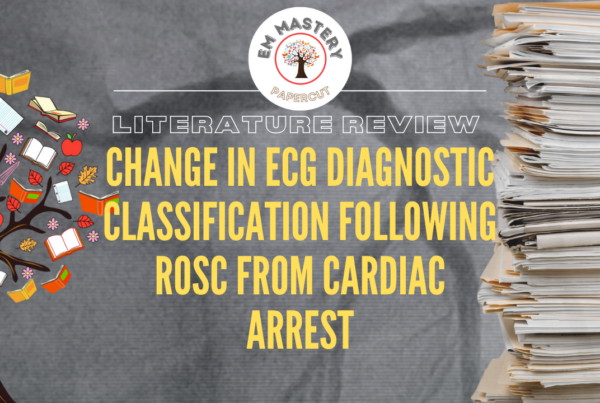P waves and Mobitz Blocks
The P wave
Look at the P waves- are they upright in II and inverted in aVR if so then normal, otherwise it’s ATRIOVENTRICULAR JUNCTIONAL OR ECTOPIC ATRIAL RHYTHM
Is There a Mobitz Block?
If the QRS complexes are clumped, think of a Mobitz Block.
Look for the P waves. Are there more P’s than QRS’s? If so, it might be a Mobitz.
The key is the P-P interval. It must be constant. If not, then think of premature atrial contractions. If the P-P interval is constant and there are more P’s than QRS’s then think of:
- Atrial flutter
- Mobitz Block(p-p intervals are constant in Mobitz II, p-r interval lengthens in Mobitz I)
- Beware the Moritz II with 2:1 block where the P’s are hidden in the T wave and it may look like sinus rhythm.
- Complete Heart block- QRS’s will be regular and the p-r interval varies
A 58 yo male presents with dizziness. What does the ECG show?

Let’s use the system so far, on this ECG.
RATE
No of QRS complexes x 6 – 11 x 6 = 66
P WAVES
Upright in I, upright in II , inverted in aVR? If not, it is an ATRIOVENTRICULAR JUNCTIONAL OR ECTOPIC ATRIAL RHYTHM
The p waves are upright in II and inverted in aVR
Are the p waves related to the QRS?
If not, are there more P waves than QRS’s: If so there are only 5 diagnoses
- Premature atrial contractions (The p-p interval is not constant)
- Atrial flutter
- Mobitz I (p –p interval constant p-r lengthens before dropped beat)
- Mobits II (p-p interval constant, p-r is constant before dropped beat)
- Complete Heart Block: (QRS is constant as coming from below AVN ie., the QRS complexes aren’t clumped, like in Mobitz I and II. The p-r interval varies.
In this case there are no flutter waves, so it’s not atrial flutter. The p-p interval is constant, so it isn’t premature atrial contractions either.
Given that the QRS complexes are clumped and not regular, as you would expect in CHB, it is either a Mobitz I or II.
Look at the p-r interval next. It increases, then a QRS is dropped. It is therefore a Mobitz I.
One good thing to do with ECG’s like this is to ‘map them’, i.e.., mark the P waves and the QRS’s and determine which p wave produces a QRS. Then determine the PR interval. Here is an example below, for this ECG.
Therefore this is a Mobitz I, or Wenckeback block.











Piece of writing writing is also a excitement, if you know afterward you can write or else it is difficult
to write.
Wow, this post is good, my younger sister is analyzing these kinds of things, thus
I am going to convey her.
Thanks for sharing your thoughts about website. Regards
After looking at a handful of the articles on your site, I really appreciate your way
of blogging. I book-marked it to my bookmark website list and will be checking back soon. Please visit my website too and let me know how you feel.